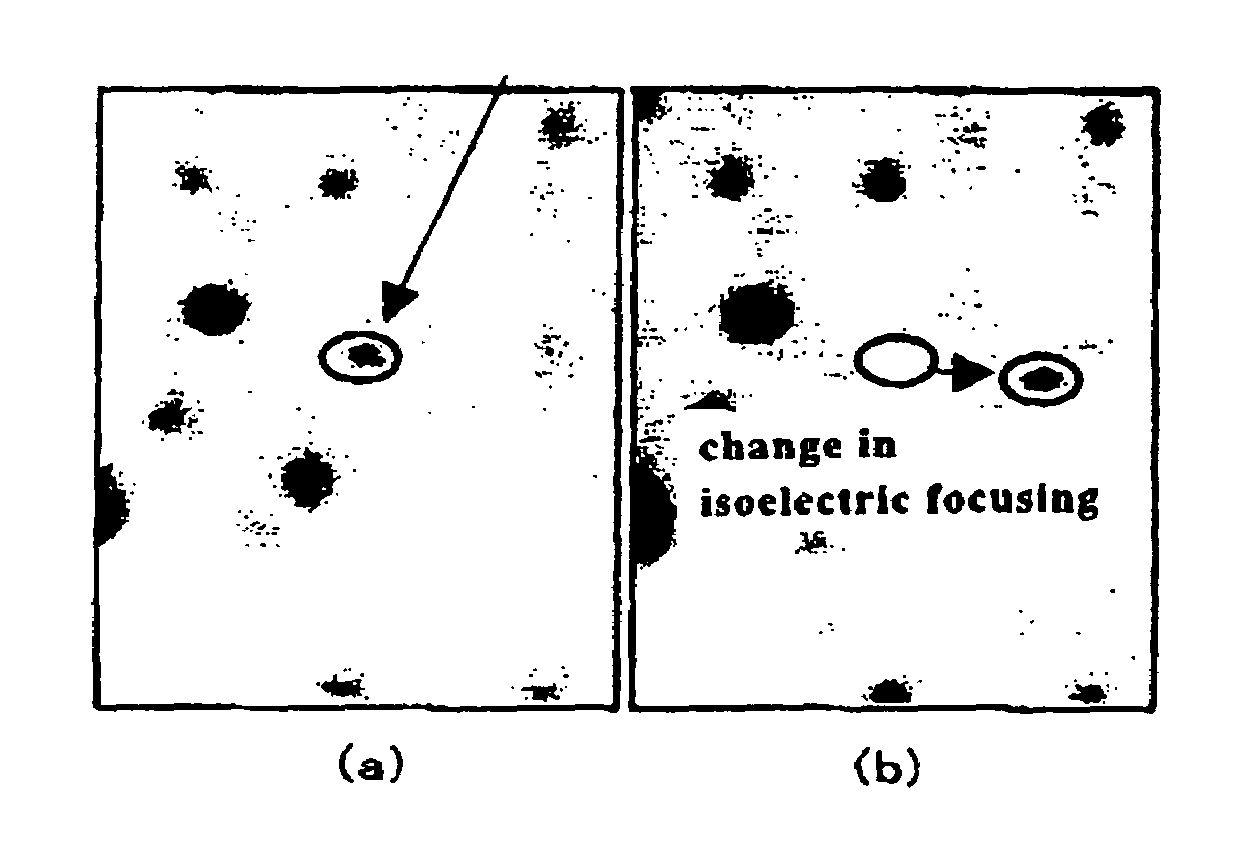Method for identifying phosphoprotein
a phosphoprotein and phosphoprotein technology, applied in the field of phosphoprotein identification, can solve the problems of special facilities and danger, and achieve the effect of preventing protein precipitation and deactivating phosphatas
- Summary
- Abstract
- Description
- Claims
- Application Information
AI Technical Summary
Benefits of technology
Problems solved by technology
Method used
Image
Examples
example
Example 1
[0023]Protein (100 μg / 50 μg) derived from rat skin fibroblasts adjusted for two-dimensional electrophoresis and 10% SDS (20 μl) were added to a 1.5 mL-Eppendorf tube, vigorously stirred, and allowed to stand in an sonicator for 1 minute. Purified water (920 μl) was added, and the mixture was stirred, followed by the addition of a preservation buffer and stirring of the mixture. The composition of the preservation buffer was as follows.
[0024]Tris-HCl (pH 7.5): 50 mM
[0025]Na2EDTA: 0.1 mM
[0026]DTT: 5 mM
[0027]Brij35 (0.01%): >5 μl
[0028]MnCl2 (20 mM): 5 μl
[0029]The resulting protein solution was divided into two parts, and recombinant λ protein phosphatase (PPase) (manufactured by New England Biolabs, 1 μl: 400 U) was added to one part, and the mixture was warmed at 30° C. for 1 hour. This solution was concentrated to 20 μl using a Millipore Ultra Free centrifugal filter; a buffer for two-dimensional electrophoresis (5 M Urea, 2 M thiourea, 1% DTT, 2% CHAPS, 2% SB3-10, 1% Ampldi...
PUM
| Property | Measurement | Unit |
|---|---|---|
| pH | aaaaa | aaaaa |
| total volume | aaaaa | aaaaa |
| electrophoresis | aaaaa | aaaaa |
Abstract
Description
Claims
Application Information
 Login to View More
Login to View More - R&D
- Intellectual Property
- Life Sciences
- Materials
- Tech Scout
- Unparalleled Data Quality
- Higher Quality Content
- 60% Fewer Hallucinations
Browse by: Latest US Patents, China's latest patents, Technical Efficacy Thesaurus, Application Domain, Technology Topic, Popular Technical Reports.
© 2025 PatSnap. All rights reserved.Legal|Privacy policy|Modern Slavery Act Transparency Statement|Sitemap|About US| Contact US: help@patsnap.com

